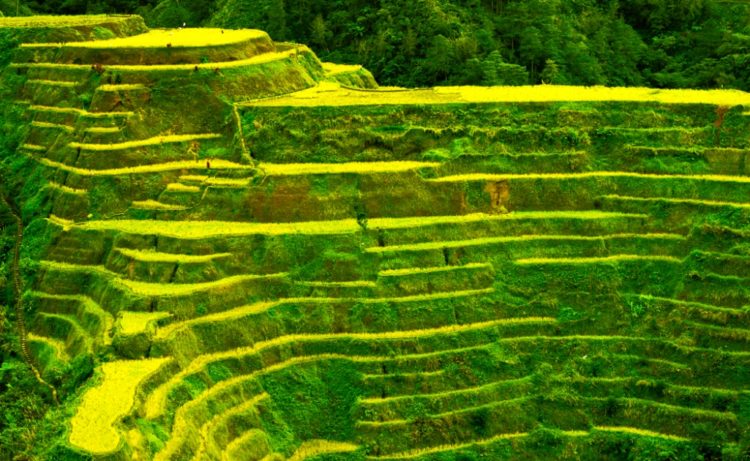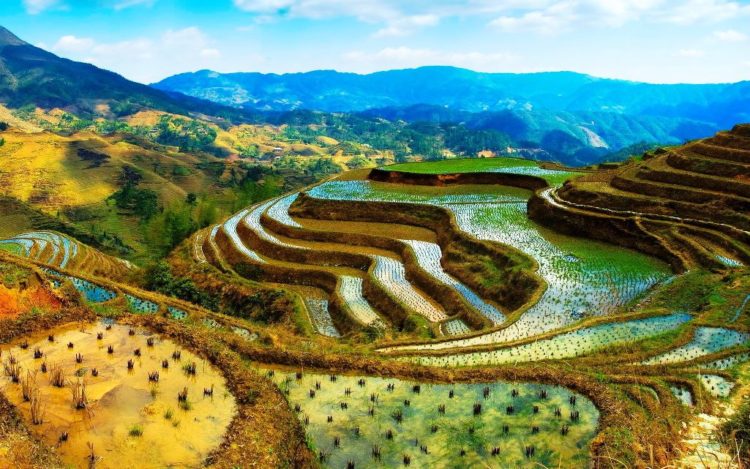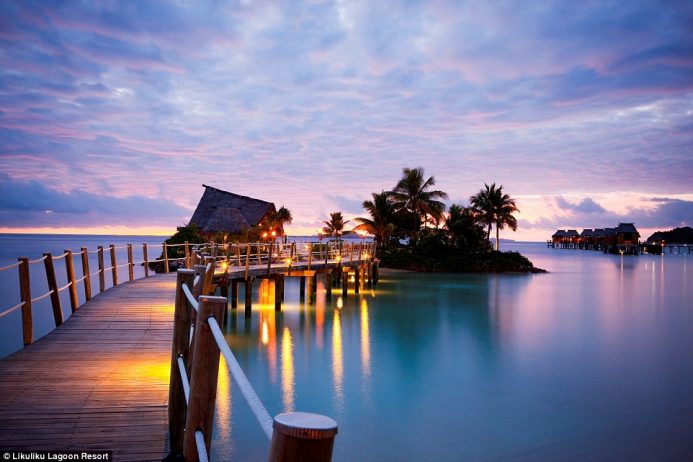The Banaue Rice Terraces are approximately 2,000-year-old terraces that were beautifully carved into the mountains of Ifugao in the Philippines by ancestors of the native people. Due to its stunning natural beauty, it is commonly referred to as the 8th Wonder of the World built with minimal equipment, mainly by hand. The Rice Terraces are located about 5000 feet above sea level, fed by an ancient irrigation system from the rainforests.
The exaggerated statement is that, if the steps were put end to end, it would encircle half the earth. These rice terraces were first constructed as a practical solution to the problem of growing rice on land that falls away in front of you at vertigo-inducing angles.
The younger generation of Ifugaos is no more interested in farming and is often a captivating lucrative industry associated with terraces, however, the older people still prefer to plant rice and vegetables on their terraces. Although with the passage of time, gradual erosion and drought cut down the steps of the terrace, which need constant care. The terraces are found in the province of Ifugao and their culture revolves around rice the culture displays an elaborate array of celebrations linked with agricultural rites from rice cultivation to rice consumption.
The harvest season usually calls for thanksgiving feasts, whereas the concluding harvest rites called tango or tungul entails a firm taboo on any agricultural work. Partaking of the bayah, rice cakes, and betel nut constitutes an indelible practice during the festivities. The native peoples still like traditional farming, hiring labor at their terraces and forests tending to root crop cultivation.
In March 2009 the Ifugao rice terraces were declared free from genetically modified organisms (GMO). The Ifugaos generally cultivate edible shells, fruit trees, and other vegetables. The rice terrace building consists of blanketing walls with stones and earth, designed to pull water from the main irrigation canal above the terrace clusters. The Ifugao’s peoples use indigenous technologies for water irrigation, stonework, earthwork, and terrace maintenance.
Moreover, tourism is another industry that is thriving in the Banaue Rice Terraces, which developed a number of activities for visitors. This includes traditional sightseeing of the terraces and visits to the tribes at the foot of the terraces. Also, refer to spiritual healing rituals by traditional Ifugao doctors. Furthermore, the most prevalent place to look at the rice terraces is called the “Sunrise Viewpoint”, where local Igarot tribe’s people pose for photographs and sell wood carvings.
So far, Banaue Rice Terraces are not on the list of UNESCO World Heritage Sites due to the presence of various modern structures. However, the Philippine government declared Banaue Rice Terraces are National Cultural Treasure. The five clusters inscribed as part of the Rice Terraces of the Philippine Cordilleras are Batad, Bangaan, Hungduan, Mayoyao Central, and Nagacadan.
Aside from the Banaue Rice terraces, there are 4 other similar terraces, in this mountainous province the Batad Rice Terraces, Mayoyao Rice Terraces in Mayoyao, Hapao Rice Terraces, and Kiangan Rice Terraces. Moreover, it’s a great place whenever you go to the Philippines. It is also recommended to hire a guide to take you on a rice terraces adventure.
The terrace valleys are absolutely breathtaking and in one or two places you can see some waterfalls and natural swimming holes. The best visiting time is any time of year, but the preferred time is between Feb to Mar when the cleaning the planting time occurs and June and July when the harvest occurs.
The rice that is harvested in Ifugao is only for personal consumption but is occasionally short due to the large family system. The average consumption is 120kig per family for a year. Though commercial rice, as it is known up in the Cordilleras, is grown in mass quantities in the lowlands with the use of fertilizers, and is exported mainly abroad.


















